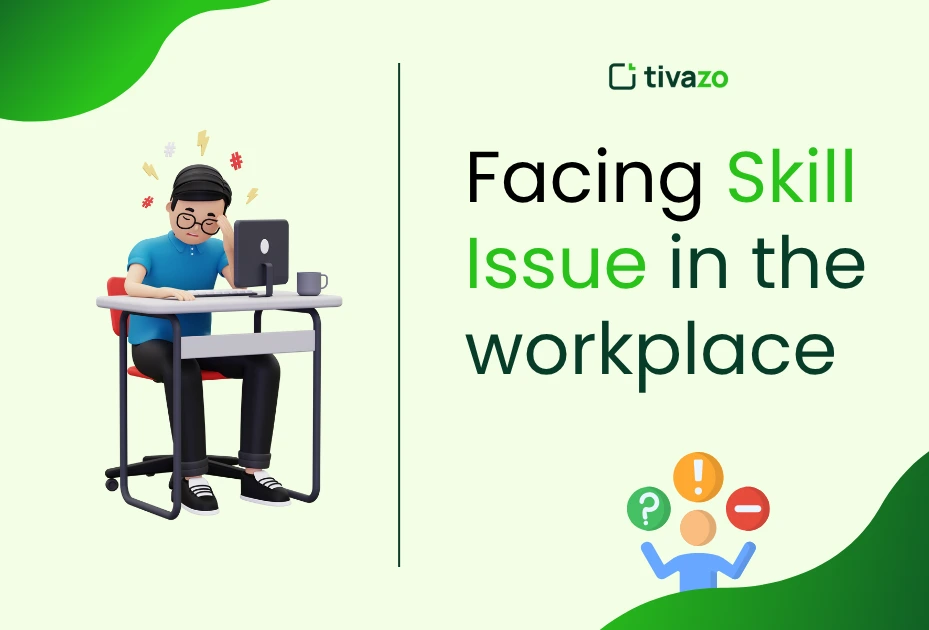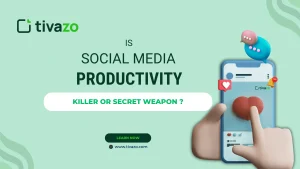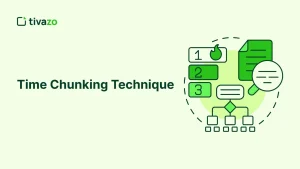Imagine a teammate who misses deadlines, can’t grasp easy concepts , or freezes in meetings. They’re not lazy. They care. But something is keeping them from taking that last step to be all they can be — and more often than not, that something is a skill issue.
In today’s rapidly changing world of work, a degree or certainly years of experience do not ensure success. It is whether skills remain relevant, and whether and how they can be developed over time.
A Skill issue isn’t a failure. They’re signals. Signs that it’s time to learn something new, adapt, or level up, and when teams and individuals answer that call, powerful things start to happen.
Let’s go on this journey together — from confusion to clarity and from struggle to strength.
Key Highlights:
- What Is a Skill Issue in the Workplace?
- 3 Root Causes of a skill issue.
- 5 Fixes for Common Workplace Skill Issues
- How to Identify Your Skill Issue
- Why Fixing Skill Issue Builds More Than Just Talent
What Is a Skill Issue in the Workplace?
A skill issue arises when an employee is missing the skills, technical, soft, or adaptive, required to fulfill certain key responsibilities of their job.
This isn’t about laziness. It’s about not being prepared yet.
Examples:
- A new manager who does not know how to delegate well.
- A designer not familiar with accessibility standards.
- An intern who doesn’t answer calls from clients due to fear.
Such things are not appreciated until they manifest in missed deadlines, team frictions, or stalled growth.
Why Skill Issue Happens: The 3 Root Causes
The 3 root causes of Skill Issue are:

1. Internal Barriers:
Many skill problems start from within. Employees may have low self-confidence or become prey to the impostor phenomenon and feel they are not good enough for the work they are doing, despite being qualified to do the job. This can sometimes make it difficult to be assertive or ask for help.
There might be fear of failure or fear of being judged by peers or superiors that causes people to hide the gaps rather than addressing them, and a lack of emotional control, struggling to cope with stressful or disappointing situations, can stunt your growth and cause work relationships to be strained.
These internal battles impede performance silently and below the surface of awareness, so that the results often remain undetected until they appear as a dramatic, serious skill issue.
2. External Pressures:
Sometimes the world of the employee changes more rapidly than they can assimilate. Fast-moving industry changes, particularly those prompted by automation and AI , can quickly render yesterday’s skills irrelevant. Many workers are also products of outdated and underfunded education systems that did not prepare them with practical, job-ready skills.
What’s more, learning resources available these days can be hindered by time, money, or even simply knowing how to get there. If people aren’t given chances to catch their breath in the pace of change, then they fall behind, not because of anything they’ve done wrong.
3. Organizational Missteps:
A Skill issue is often the fault of the organizations themselves. Bad onboarding can make new employees feel disoriented, confused, unprepared, and unequipped to do their job. If job roles are vague or in a state of perpetual flux without direction, employees can’t perform with confidence or consistency.
Perhaps the most frequent blunder is the dearth of consistent, actionable feedback. Without consistent performance reviews and coaching, employees are left to guess what they are doing wrong (or right), leading to their improvement being a guessing game. These deficiencies of leadership and organization get people into a situation where matters of skill cannot but occur.
Tip: Understanding the why behind a skill issue is more important than the what of the gap.
The Cost of Ignoring Skill Issues
And if we ignore the problem of skills, it’s like neglecting termites in the foundation of a building: The damage may not be visible at first, but eventually the structure will collapse. All of these problems can cause a team to unravel. Other colleagues have to pick up the slack for underperformance, which can result in dwindling morale and frustration amongst the team.
Productivity erodes, and KPIs are lost. Good employees may see their development stalled, unsupported in overcoming gaps holding them back. Trust slowly starts to degrade among team members, team members and their managers , and even between companies and their customers. An unresolved skill issue not only inhibits what is possible; it can silently erode entire teams and threaten ultimate success.
Consequences:
- Team dysfunction: Others pick up the slack.
- Missed KPIs: Productivity decreases.
- Career plateaus: Talented employees get stuck.
- Trust erosion: In peers, managers, and clients.
An unaddressed skill issue does more than stall careers — it can sink teams.
The Mindset Shift: From Shame to Strength
You are not broken. You are becoming.
In my years coaching young professionals, this is the most powerful: You can build skills.
If you or anyone on your team has a skill-based issue in the workplace, address it through investigation, not shame.
Mindset Tips:
- See every struggle as a sign, not a sentence.
- Swap “I can’t” out for “I’m learning.”
- Track effort, not just results.
5 Fixes for Common Workplace Skill Issues
Here are five high-impact strategies to fix a skill issue fast and effectively:

Fix 1: Create Personalized Learning Plans
There is no one-size-fits-all when it comes to how any individual employee will learn and thrive. Personalized plans help people concentrate on the specific skills they need, taking into account past performance and future goals. When learning is integrated with actual jobs and meaningful goals, it doesn’t look like a chore anymore – it becomes a personal mission.
Fix 2: Establish Feedback Loops & Coaching
Growth starts with awareness. Even just a small bit of consistent, positive reinforcement can let people know what you want to see more of from them and what they can be doing differently. Leverage that with coaching, and feedback becomes the gasoline for actual change. This is not about blaming; it’s about unlocking potential through nurturing and support.
Fix 3: Embrace Microlearning & Just-In-Time Content
In the hectic workday world of today, short, focused lessons are best. Mini-lessons impart relevant insights in minutes, when learners need them. Learning occurs between tasks and during breaks, and just before action. These little steps accumulate into genuine skill over time, without a break in the work’s rhythm.
Fix 4: Peer Mentorship & Cross-Training
Some of the best learning is peer-to-peer. When teammates share skills and experiences, knowledge is relatable and stickier. Mentoring develops confidence, and cross-training develops agility throughout the team. This isn’t just skill-building — it is team-building.
Fix 5: Set Measurable Goals with Progress Reviews
In the end, vague goals don’t tend to lead to results. Clear and tangible goals provide direction and great motivation. Frequent check-ins, ideally every two weeks, hold growth accountable and make progress clear. Small wins accumulate over time and contribute to the momentum behind true mastery.
Create a Growth-Centered Workplace Culture
A place that always solves a skill issue is not a place where it’s good to grow — it’s a place where growth is demanded. In these cultures, learning is the job, it’s not a detachment from it. There’s no stigma to failure as long as you fail fast, and honest discussions about growth are baked into the work. This culture is heavily influenced by the leaders.
They make it ok for all these strong people — the smart people, the ones with business skills — to admit that they, too, don’t know things. When we give credit and reward coaching, mentoring, and training efforts, we send a strong message that improvement does count. When the way ‘up’ is clear and attainable, motivation increases, and skill gaps start to close in a natural way. A culture of growth makes skill problems much more progress than problems.
For leaders:
- Normalize vulnerability
- Reward coaching and upskilling
- Provide clear paths for advancement
How Managers Can Help Employees Overcome a Skill Issue
Managers aren’t just overseers, they’re enablers of growth. Their mindset and behaviour will have a direct impact on how staff address the issue of skills. The best business leaders can recognize early signs of struggle, not to penalize, but to support. Instead of “Why aren’t you doing it?” they begin, “What kind of help do you need?” This language change allows for trust and partnership.
Time and resources are needed for learning, but so is celebrating the effort that people put into improving, not just the final results. The more that employees can feel safe to do their learning, make mistakes, and try again, the faster they will move. A manager does not make the most difference by what they achieve, but by how much they make other people feel like they have achieved.
Emotional Intelligence: The Invisible Advantage
A workplace skill issue can be easily addressed by improving emotional intelligence (EQ), but this is something most people know little about. Technical know-how and knowledge are important, yes, but EQ is what shapes how well employees react to feedback, challenging situations, and change. Highly emotionally intelligent people are also quicker at learning and more willing to accept coaching, more adaptable, quicker to recover from failure, and more effective at influencing and persuading others.
They understand team dynamics and are willing to grow because they’re not afraid of being wrong; they see it as an opportunity to learn. IQ is largely fixed. We know that training in emotional intelligence offers a cascade of benefits that spill over into every domain of people’s livelihood, including successful leadership. That’s not just a soft skill, but a strategic weapon.
Invest in EQ training. It’s the ultimate soft skill.
Top Tech Tools to Fix a Skill Issue Fast
Here’s your digital toolbox for employee improvement:
- LinkedIn Learning – Role-specific courses
- Coursera – Structured certifications
- Notion – Skill tracking + journals
- EdApp – Microlearning on the go
- Slack + Donut – Peer mentoring connections
- Pluralsight – Technical upskilling
How to Track Skill Growth Over Time
Growth that lasts is about small, tangible victories. It’s not about micromanaging the development of skill; it is about momentum. The only way to track progress is by tracking it against clear, skill-specific goals. These measurements help to focus on and make changes visible. Alongside this, tracking time on how much you’re dedicating to every skill can reveal the crucial pattern. Also, having an accountability partner can be both motivating and offer a reality check. Growth doesn’t always shout. More often, it murmurs in small ways, reiterated again and again until they accumulate.
How to Identify Your Skill Issue
Here’s a quick self-assessment model I recommend:

Tech-Free Ways to Fix a Skill Issue
Software and subscriptions aren’t the answers for every formula. Some of the most potent ways to solve a skill problem tend to be quiet, consistent human connections. Start with a basic, structured conversation — manager to staff member, peer to peer. These conversations create clarity and reveal secret struggles.
Promote job shadowing, working alongside a colleague in silence, just observing another employee’s process. Give them opportunities to develop new skills in low-stakes environments, like internal presentations or trial projects. Have employees maintain a “skill journal,” documenting small wins and moments of struggle each week. Even role-playing hard topics, such as client calls or decision-making, feeds into both confidence and competence.
Which is why when people take their eyes off the screens and focus on presence, patience, and practice, it turns out that the skill gap narrows — and human beings flourish.
Why Fixing Skill Issue Builds More Than Just Talent
Solving for a skill doesn’t just raise a single person’s skill level — it raises the level of the whole team ecosystem. When companies invest in development, they’re not just training — they’re breeding loyalty. Those employees who feel supported are more engaged, more open to feedback, and more likely to stay.
Skills building also breeds trust. As team members see others growing and getting better over time, they feel safe doing the same. It normalizes vulnerability. It encourages curiosity. And it sends a potent message: This is a workplace where people don’t need to be perfect, but they do need to be getting better.
Conclusion: Begin Your Growth Journey Today
A skill issue is not a flaw — it’s a flag. One that says, “It’s time to grow.”
With the right mindset, the right systems, and the right support, you can turn every employee’s least valuable weakness into their most valuable edge.
Next, take one skill you want to develop. Pick a tool. Block 30 minutes this week. Then do it again next week.
If you found this guide useful, pass it along to a coworker or supervisor. Let’s create workplaces where growth is not optional — it’s assumed.
FAQs
What is skill issue and will issue?
A skill issue is a lack of ability; a will issue is a lack of motivation, one needs training, other needs mindset or leadership support.
Why am I having skill issues?
You may be facing skill issues due to outdated knowledge, lack of feedback, poor training, or internal self-doubt — all fixable with the right approach.
Do smart people also have skill issue?
Yes, even top performers face a skill issue when roles evolve or expectations shift; it’s a sign to grow, not a flaw.
What’s the first step to fix a skill issue?
Identify the gap through reflection, peer feedback, or testing — clarity is the first step toward progress.




